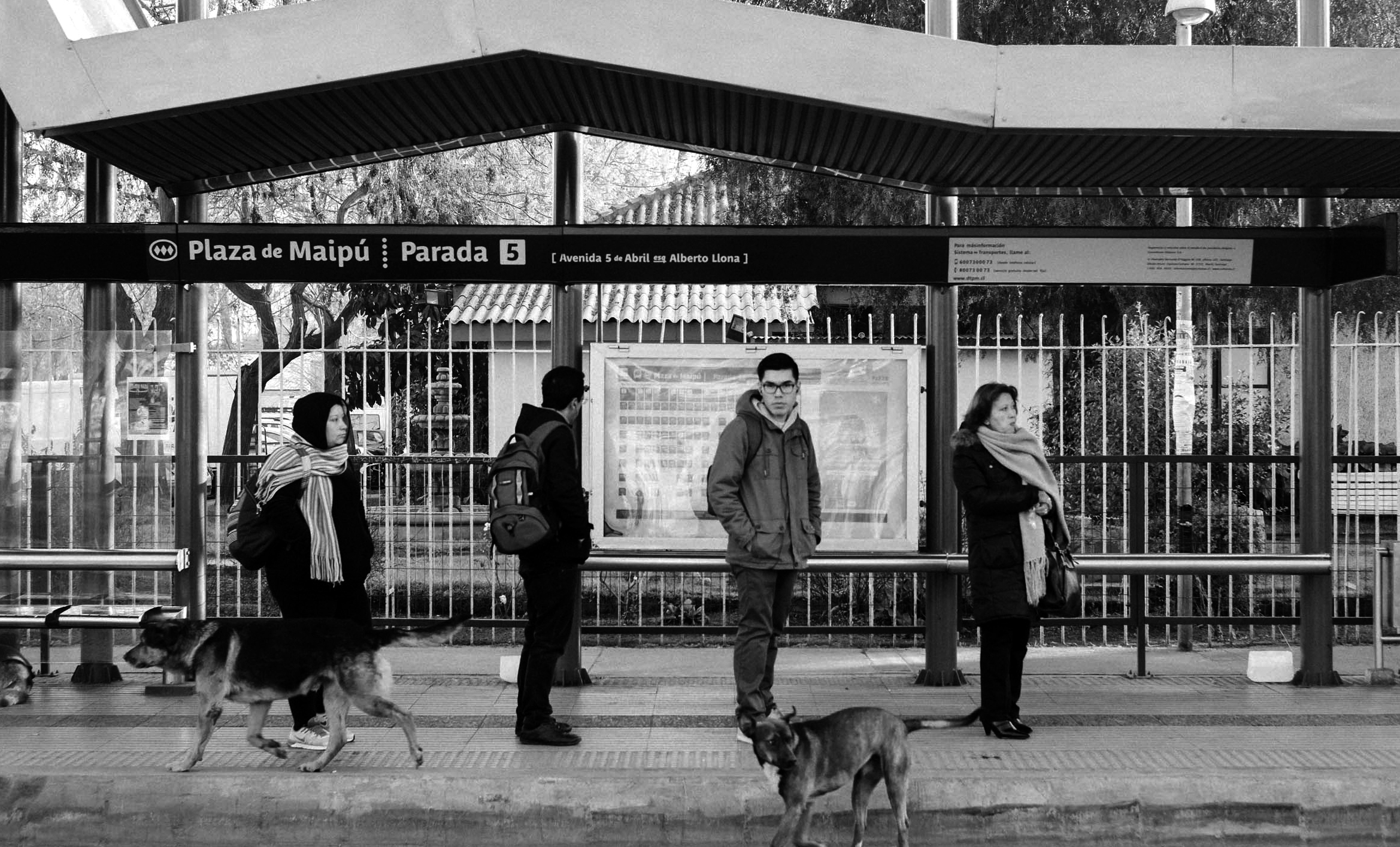Understanding travelers and finding opportunities for improvement
The bus stop is one of the most critical moments in a trip by the public transportation system. In the city of Santiago, such facilities are placed in different social realities and demand different solutions. In that context, the Metropolitan Public Transportation Board (Dirección de Transporte Público Metropolitano in Spanish) asked us to help them find answers to improve the service by adding complementary services to the bus stops and, as a consequence, reducing the anxiety of users.
The project outcome was a report that redefines the main project challenge, describes the main user’s pains during the whole trip, and suggests possible co-created solutions for the “waiting” moment.
During days, we visited key bus stops to gather qualitative information and ask travelers about their experiences. To understand the main problem from other areas of the service, we arranged workshops with stakeholders and the staff. The insights collected helped us to identify the internal service problems by modeling people experiences and service operation in single journey maps.
Experiencing the transportation service and working with pedestrians
When the team visited the main bus stops at peak hours, we registered the experiences through cultural probes that gathered emotions, expectations, and concerns. We also used shadowing to immerse ourselves in real situations and face the daily reality. Finally, we run collaborative sessions with pedestrians and co-created a “desired bus stop” to understand the essential components of the service.
Re-framing the problem to find a mid-term opportunity
After collecting information from different inputs, the team worked with the service staff to identify patterns of the reasons behind users pains. The result re-framed the main problem that shifts from adding complementary services to inform in real-time the bus arrival.
Once that stakeholders aligned with the new definition, both teams worked together to propose ideas in a brainstorming session. These ideas were linked and adapted to create a service concept.
